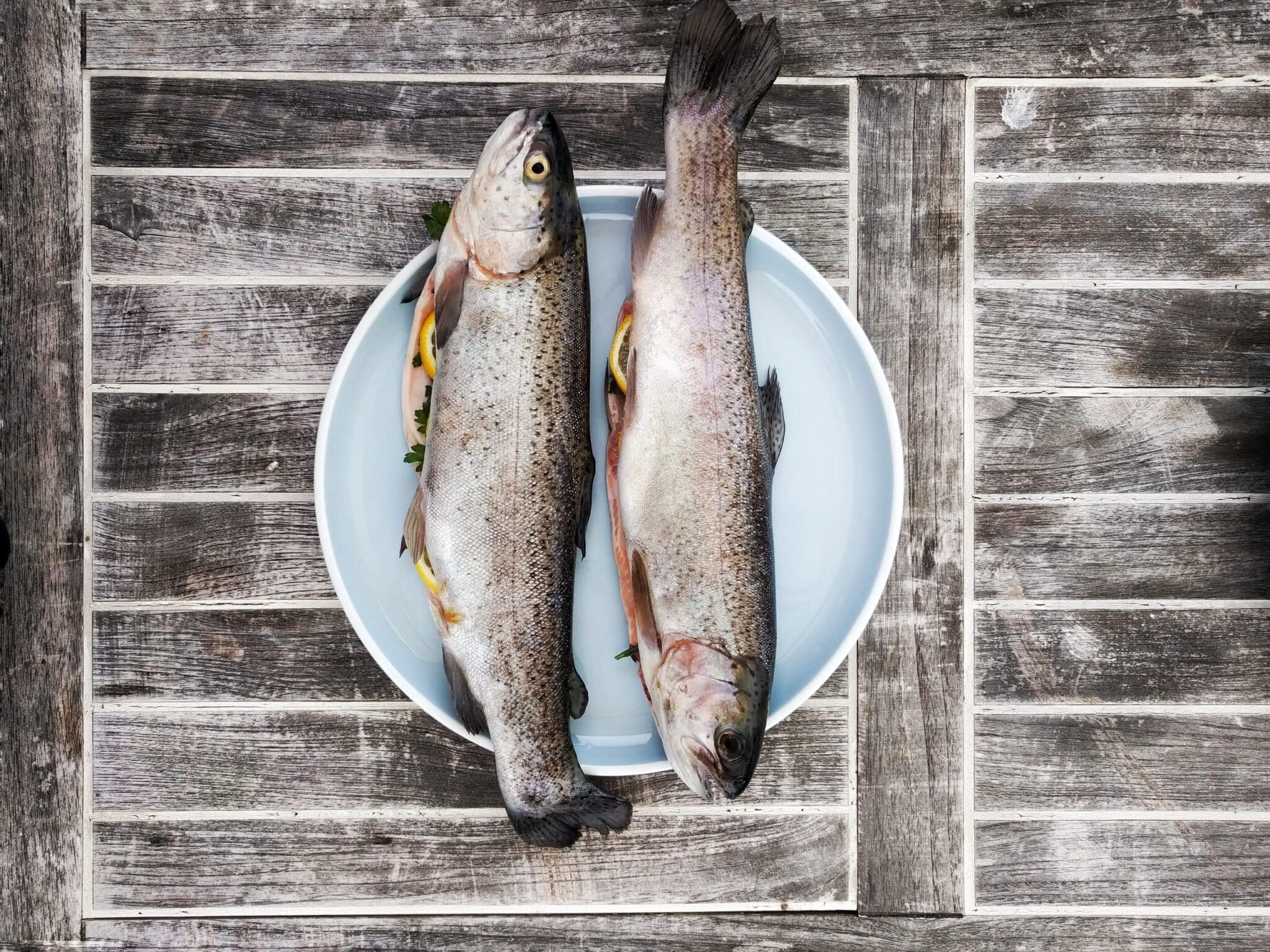
Why learn how to cook a whole fish? For starters, whether on a grill or roasting it in the oven, it tastes better. It’s also one of the easiest ways to cook fish. Whole fish are generally fresher than filleted fish—you can see the difference when purchasing—and usually cost less than fillets, bones, and all.
Though the Gulf of Maine is well-known for its lobster, scallops, and clams, those clean, cold waters hold some of the best-tasting fish you will ever have. In large part, Maine seafood’s exceptional flavor results from the frigid waters and abundant nutrients carried north into the waters by the gulf stream. The waters offer an ideal environment for shellfish and schools of fish. Smaller baitfish bring larger predators, such as halibut, tuna, swordfish, and sharks, like the shortfin mako.
Though a wide variety of fish is found in the seafood markets and restaurant menus throughout Maine, some, like full-grown cod or the larger predators mentioned, are too big to be cooked whole. But many fish caught in the Gulf of Maine can be. Whitefish like haddock or a smaller cod are the most popular that can be cooked whole, and there are flatfish, too —flounder, sole, and dab—and, though it’s often used as lobster bait or canned as sardines if you can find the whole herring to grill its buttery taste is divine. Cultured salmon—raised in ocean nets—is also excellent grilled whole.
Roasting a whole fish can be done quite easily. Slide it into the oven once it’s gutted, stuffed, and seasoned. On the other hand, grilling a whole fish can be somewhat challenging to keep the fish intact on the grill while cooking. Flipping them can be tricky, but it can be done (at the right moment)! Many backyard grill-meisters rely on securing fish in grill baskets or rolling them up in aluminum foil. Whatever method works –the goal is to keep the whole fish whole while grilling.
Follow these simple steps to cook your fish whole.
- The fish must be cleaned and gutted before cooking. Gutting a fish is a very easy, yet a little messy, process. Gutting the fish removes its entrails and other parts that could contaminate the fish’s flesh. Start by laying the fish on a cutting board. Hold it firmly on its side so the knife or fish doesn’t slip. Place the knife’s tip before the rear bottom fin and slice along the stomach to the neck.
Once open, empty the guts into the sink and rinse the fish under cold water. If the fish is scaly, like flounder or salmon, the scales should be scraped off and rinsed. Use the back of a knife or even a steel wool scrubber, rinsing thoroughly. - Next, if you choose, the fish can be scored—a cutting technique that helps distribute heat for the fish to cook evenly. Cut vertical slices at an angle, not too deep, and not through it. Repeat every 1½ inches or three or four times on each side, depending on the size.
- Otherwise, prepare the fish by coating both sides with olive oil and sprinkling with garlic, salt, and pepper. You can prepare a stuffing of your liking for the cavity. A simple one for the sole consists of lemon slices, a sprinkling of thyme, and diced green onions. For haddock or white fish, you can be adventurous with crabmeat or scallop stuffing. Either will surely impress your guests. A small portion of scallops or crab meat will do.
Chop them up and mix in organic breadcrumbs, 1 beaten egg, melted butter or olive oil, diced garlic, and then form a dough. You could add grated Romano or Parmesan cheese to the mix. Once the dough is formed, stuff portions evenly into the fish cavity. It needs to cook with the fish. - Preheat the grill to medium-high. If you are not using a grill basket or foil, clean the grill and brush with oil before placing the fish on it. Take the fish from the cutting board or tray and place it on the grill. Let it sit there for approximately 5-7 minutes. The time depends on the size and thickness of the fish. Do not move it around; let it cook for several minutes. When the fish whitens and skin browns, take a carving fork and insert the tines under the grill grate. Attempt to lift the fish from below. If there is resistance, stop trying and let it cook until the skin releases. When it’s ready, the fish will lift easily. Use a spatula to catch it and gently rest the flip side on the grill for another 5-7 minutes or until the fish has reached an internal temperature of 140-145 degrees.
- Remove from the grill with a spatula onto a plate or platter when fully cooked. Let sit for 5 minutes, then serve. The skin and bones should remove easily, leaving just the remaining meat on your dish.
Order FRESH live lobsters or fresh-picked meat online for delivery directly to your door! We also offer curbside pick-up at our South Portland location if you live locally – call for details and to place your order over the phone. Feel free to contact us— we will happily answer any of your questions.
